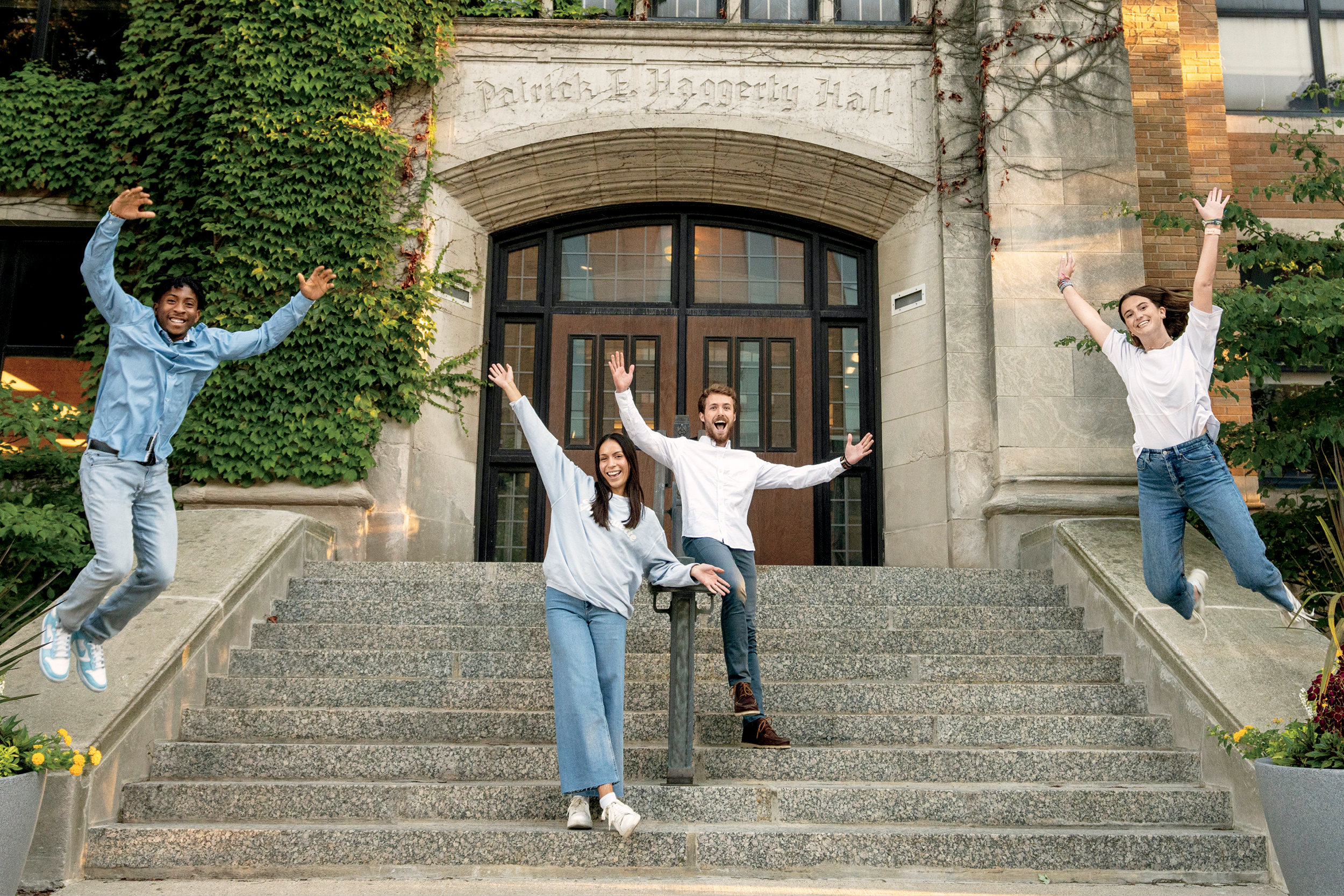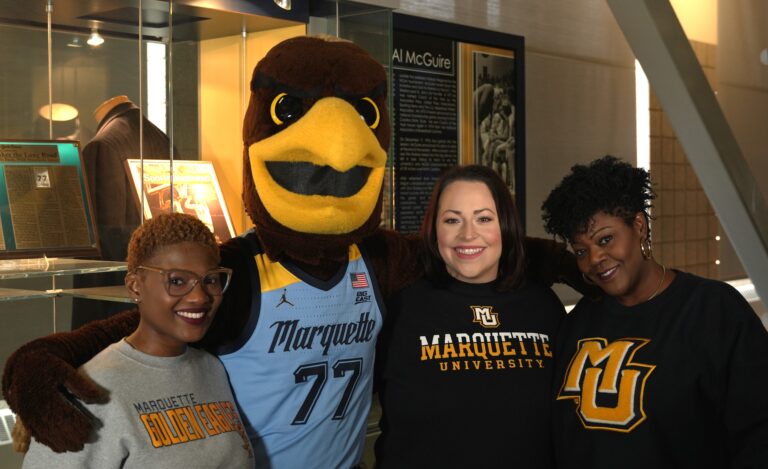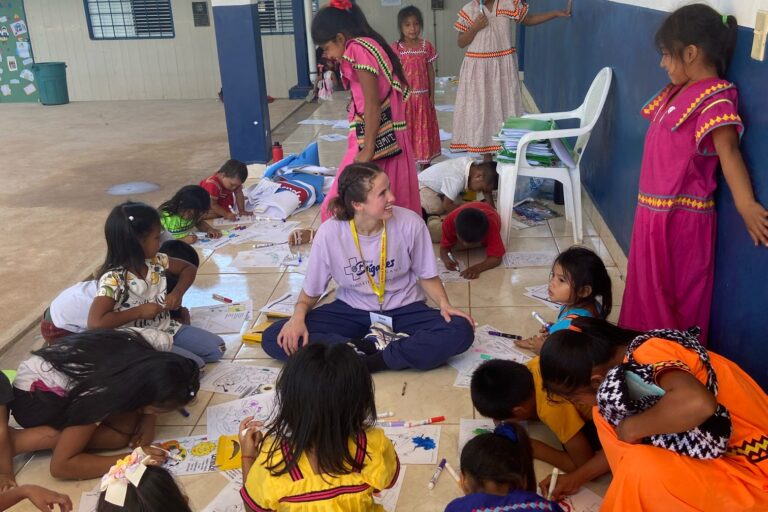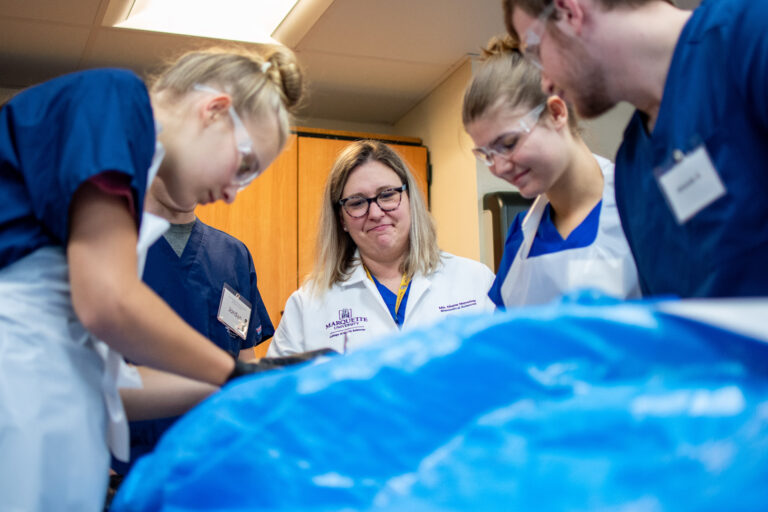Two or three times a day during much of the year, a group of visitors files into a presentation room in Zilber Hall. There, they soak up an introductory presentation from a Marquette admissions counselor before being invited to experience the campus in person.
At a typical university, those students and their families — often 25 people or more — would head off in a herd, led by a student walking backward to maintain eye contact and to project his or her words out to the group, while trying not to trip.
But Marquette is different. The first indication comes from a murmur that can be heard coming from a hallway outside the closed doors of the meeting room. It’s the hushed sound of student tour guides discussing the prospective students in attendance that day — their hometowns, their academic interests, what they like to do outside of class.
They’re seeking matches.
If senior Emma Brown is working, she’ll often pair with a student interested in studying nursing, or someone drawn to the idea of spending spring break on a service trip. Senior DJ Lenius will find a student who shares his interest in engineering and STEM subjects, or his love of exploring intramural sports and the outdoors. Junior and New Jersey native Johnnie Brooker loves to introduce fellow East Coasters to Marquette, and clicks with those interested in journalism, political science and the University Honors Program. And senior Alana Walkush is a great match for future advertising and marketing majors or someone who wants an inside view of Greek life. As a member of Marquette’s Native American community, she often learns from her campus network when a prospective Indigenous student will be visiting. “I like to make those connections when I can,” she says. “The students can relate to me, and they’re always interested in why I chose Marquette.”
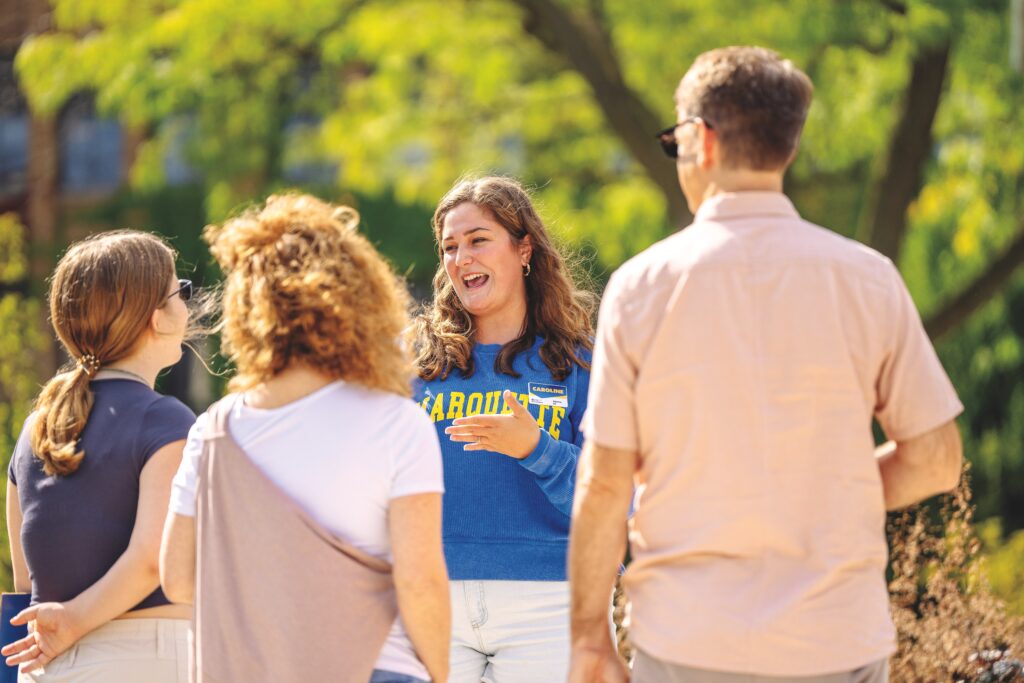
All Aboard
No two tours are identical, but each follows a similar route around campus:
- STARTING POINT: Undergraduate Admissions in Zilber Hall
- Raynor Library (and soon the neighboring Lemonis Center for Student Success)
- Academic buildings of a family’s choosing, including classroom and lecture space
- St. Joan of Arc Chapel
- Wellness + Helfaer Recreation facility, under construction
- A residence hall that includes a dining hall, such as The Commons
- LAST STOP: Alumni Memorial Union near The Spirit Shop
The tours that result from these matches — often but not always one-to-one — embody a human-centered approach to campus visits that distinguishes Marquette among its peers. For the visiting family, it starts with an invitation to park in one of 15 front-row parking spaces in a lot near Zilber, each marked, “Future Golden Eagle Parking.” It continues with a warm welcome by current students at the Visitor Center front desk. And many visiting students take advantage of opportunities for additional one-on-one connections, from sitting down with an admissions counselor to visiting a department to meet with a faculty member or adviser in the student’s academic program of interest.
Through some combination of this personal approach and what it reveals about Marquette, these campus visits make an enormous difference. Students who visited campus were 7.5 times more likely to enroll in this fall’s incoming class than those who did not. And tours are at the heart of this influence.
“Our personalized campus visit experience really sets the standard in campus tours,” says Brian Troyer, dean of undergraduate admissions. “Ultimately, it’s the biggest differentiator on whether a student whom we’ve admitted to Marquette ultimately chooses to enroll here.”
So, at a time when population trends are reducing the number of traditional college-age students and putting pressure on college admissions, tour guides at Marquette — in their warm and relatable way — are a pretty big deal. And they’re contributors to a picture of success that allowed the university to welcome its largest ever first-year cohort in 2018 (2,162 students) and to meet or beat enrollment targets regularly since a pandemic hiccup when campus visits happened to be suspended.
No two tours are the same, guides will tell you. They follow no formal script or rigid itinerary, though there are certain topics (such as the fact that 75 percent of classes have 30 or fewer students) that are always covered and certain places that are never missed. St. Joan of Arc Chapel is one of those places, a natural spot for covering the role of faith and mission at this Catholic, Jesuit university.
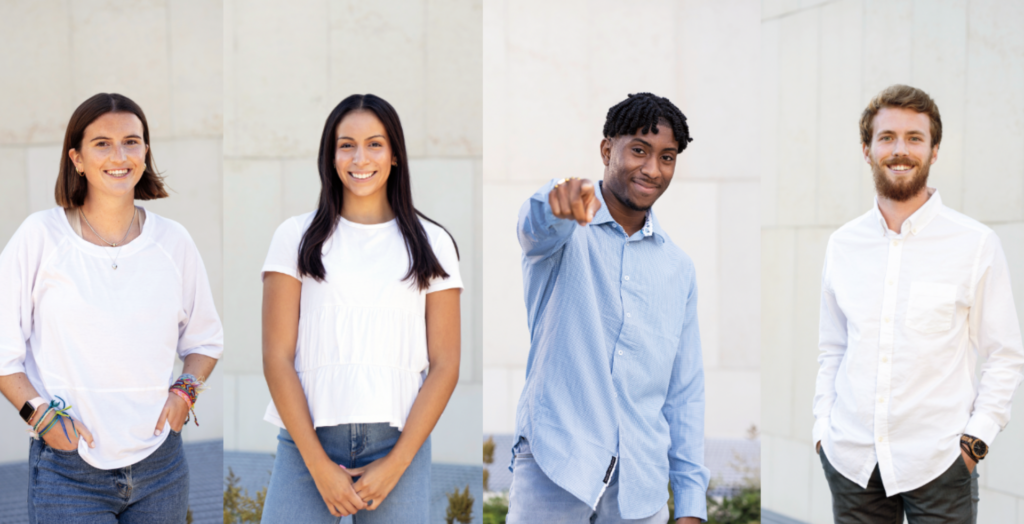
“From the start, I make sure the family feels welcome to ask questions,” says Lenius, the engineering major from Door County, Wisconsin. “The goal is creating that relationship, being very open with them right out of the gate.”
Handling tours this way requires a unique commitment from Marquette. With about 70 tour guides, Marquette has a “deep bench” that far exceeds the size of some large state universities with conventional group touring models, Troyer says. Four professional staff members work to recruit, train and supervise tour guides and front desk staff. And Marquette’s tour guides receive extensive training — studying a handbook, watching multiple tours, conducting mock and co-piloted tours with experienced guides — before going out on their own.
“The goal is creating that relationship, being very open with them right out of the gate.”
DJ Lenius, engineering student
What results is something remarkable: Tour guides find their voices. With staff encouragement, they feel empowered to open up about their relationship with Marquette — to share sources of joy and satisfaction, struggles overcome, and places or groups where they’ve found a sense of belonging. They’re ready to provide honest takes on nuanced topics such as student safety, diversity and faith at Marquette, which they’ve reviewed with staff till they feel comfortable with them. (A point Emma Brown, the nursing student from New York, shares about Marquette’s mission: “Marquette does a really great job presenting students with opportunities to partake in faith-based activities. It’s up to the student how much they want to take that and run.”)
“When I meet with guides as part of the training process,” Troyer says, “I stress the importance of being authentic about their experience here.” The risk of honesty revealing that Marquette is not the right place for certain prospects is one the admissions team willingly accepts. Experience shows that when bonds with Marquette begin forming in these tours, they often endure.
Each tour ends on the ground floor of the Alumni Memorial Union, near the Brew Cafe and Spirit Shop. “You can tell they liked it if they walk into The Spirit Shop at the end of the tour to buy some gear,” says Walkush, the advertising major from Seattle.
“You never know the kind of impact you’re going to have on families,” says Brooker, the journalism and political science major from New Jersey. “They’ll always remember something from the tour, and if you did a good job, you see them again in the fall.”

